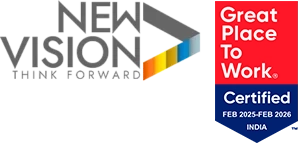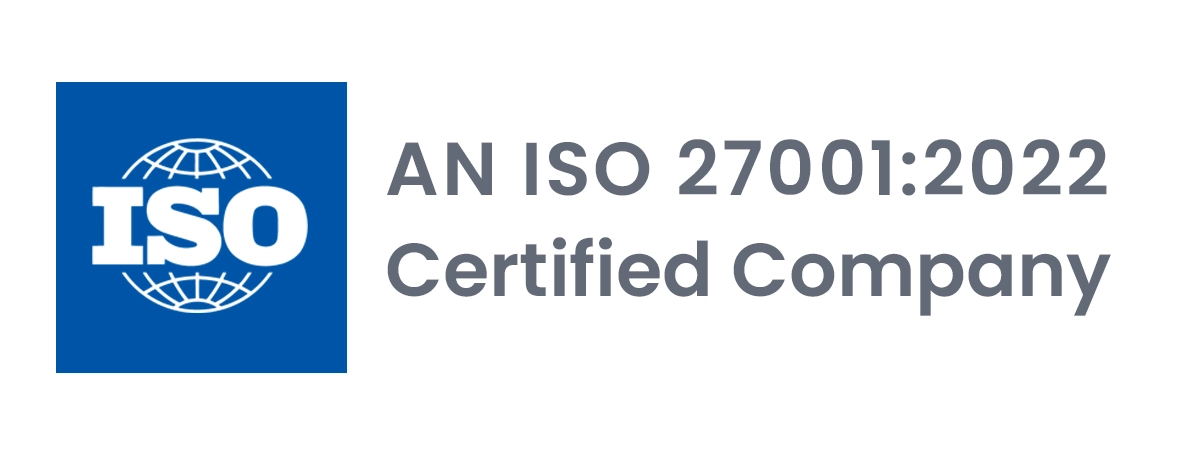
In a digital world where we take seamless connectivity for granted, Cloud security and performance are non-negotiable. As businesses race to digitize everything, keeping track of security sometimes takes a back seat. However, security breaches expose businesses to not just compliance and privacy issues, but threatens the very existence.
Today, the threat landscape has become complex with criminals using cyberspace as a hunting ground to make profits, and nation states resorting to cyber aggression as a strategic weapon. It is common to find nation states using cyber wars to spread disinformation and weaken vital systems, while criminals are using data encryption for extortion.
In 2024, organizations paid USD 813.55 million in ransomware. The Cost of Data Breach Report 2024, estimates that an average breach costs USD 4.88 million, while a breach into critical infrastructure averages more at USD 5.62 million.
But the good news is that ransomware witnessed a decline in 2024 due to better organizational defences and successful operations by law agencies. While the dominant cyber criminals have been dismantled, smaller groups continue to operate targeting even small organizations under 10 million in revenue. Another crucial data to set the context is that, one in four organizations fail to recover data from the attack despite paying the ransom.
That is precisely why strengthening security posture is important. Given that many organizations have successfully shored up defence to thwart attacks and Cloud affords automation and advanced AI technologies, ramping up defences is possible with a thoughtful approach.
Cloud Security is Different by Design
Given the seamless nature of the Cloud, security is inherently different. There are no physical barriers as the organization has become boundary-less, and so, traditional approaches relying on perimeter-based security have become redundant.
Cloud offers higher security with in-built automation and advanced AI capabilities for monitoring and remedial measures. But the key is to understand the capabilities and employ security practices aligned with organizational needs—like any other tool, security practices must be finely balanced with the need for speed and agility.
A fundamental difference between Cloud and traditional IT security is that security is a shared responsibility in the Cloud. This means that public Cloud provider is responsible for the physical infrastructure such as the datacenter, and the underlying infrastructure, while it is the users, the business or organization that must ensure the security of the resources they use with secure configuration and restricting access to the resources and data.
Studies find that security misconfiguration is the top concern amongst 67% of the organizations using Cloud, followed by lack of visibility at 64% and IAM misconfiguration at 61%.
It is important to understand that while modern Cloud approaches such as DevOps automation, distributed serverless architectures and ephemeral assets such as containers offer greater agility and flexibility, the security implications of leveraging such resources are completely different.
Thanks to advanced automation, public Cloud is inherently more secure and easier to manage than traditional on-premise deployments. For example, automated patching ensures rapid updates, while continuous monitoring and auto-remediation capabilities ensure workloads are resilient and protected. Features such as Active Directory, Azure Management Groups, Azure Blueprints allow businesses to deploy, manage and monitor security setting from a central dashboard to meet security and compliance requirements on a continuous basis.
Cloud providers continuously invest in security technologies aligned with the evolving needs of customers, while also supporting with security best practices and architectures. Designing Cloud architectures with Well-architected principles, embedding Security by Design principles, and embracing a zero-trust approach make Cloud deployments robust and highly secure. Further, the flexibility that Cloud architectures accord allow organizations to tweak deployments to enhance security aligned with the evolving landscape.
Enhancing Security with Cloud Security Assessment Services
To enhance the security posture, organizations must take stock of existing systems and practices and embrace a process of rigorous implementation to prevent, detect and respond to incidents. Based on our experience of working with a wide range of customers, NewVision finds the following steps crucial in assessing the Cloud security posture of workloads.
Detailed security assessment of existing deployment to identify misconfigurations, architectural risks and blind spots.
Define a security roadmap for a robust foundation with Well-Architected framework design principles, security tools and forensics.
Implement Security by Design principles wherein security is embedded in the fabric of Cloud deployment by leveraging the most appropriate security services, and third-party tools for comprehensive view of the environment.
Embrace a zero-trust approach with a layered approach to access and data encryption at rest and in transit.
Security automation for continuous compliance, auto-remediation and incident management.
Enable 24×7 monitoring with advanced analytics, threat remediation and ongoing threat management.
NewVision provides comprehensive penetration testing solutions including Static Application Security Testing (SAST) and Dynamic application security testing (DAST) services which covers security vulnerabilities from all angles. Our SAST services examines source code and binaries to identify security gaps early in the development cycle, and remediate applications before going into production.
By integrating SAST into the CICD pipeline, we facilitate customers to build high-quality software with continuous scanning and code review. At the same time, automated report generation and mechanisms track remediation efforts and empower development teams to prevent costly mistakes easily.
NewVision DAST services analyzes production workloads to discover risks in a runtime environment by simulating attacks such as SQL injections and breaching authentication. Our solutions are aimed at helping customers to identify potential gaps and strengthen the overall security posture.
Best Practices for Cloud Security Posture Management
Working with a large number of customers across organizations, NewVision Software understands the threat landscape and recommends the following best practices to enhance the overall Cloud security posture on Azure.
Implement Access Control: Granular access control using Azure RABC that restricts access to workloads and Cloud resources, backed by regular review and update permissions.
Multi-Factor Authentication: Implement MFA to get an added layer of access control. MFA capabilities are integrated with Microsoft Entra which is a comprehensive IAM suite, and authenticates based on access policy and risk assessment.
Centralized Web Application Firewall: A WAF solution simplifies monitoring and managing applications against threats and intrusions from a central location instead of managing individual applications. WAF is natively integrated with many Azure services, such as Azure Application Gateway and Azure CDN.
DDoS Protection: While the basic tier of Azure DDoS Protection is available for all workloads, we recommend to subscribe a paid version for enhanced capabilities like advanced analytics, adaptive tuning and integrated reporting.
Use a Bastion Host: Protect applications by using a bastion to prevent direct public access to your workloads. Using Azure Bastion enables to access workloads without exposing to the public internet, while providing seamless connectivity through the Azure portal.
Enforce Port Management: Restrict unnecessary inbound and outbound ports into the public Internet to minimize exposure and unauthorized access. Permit only essential inbound ports and fortify with firewalls and network security access; permit outbound traffic to those necessary for business, and restrict protocols such as SSH and RDP to prevent data exfiltration, lateral movement, and network scans during an event.
Automated log monitoring: Collect and anlayze logs from infrastructure and applications on a continuous basis using tools like Azure Monitor and Log Analytics for real-time visibility into the environment and incident management.
How to Improve Cloud Security Posture
Best-in-class organizations are stepping up Cloud security measures seriously, and working with experienced partners to enhance the security posture. This includes review of the existing systems by Cloud security consulting providers and implement tools, polices, and frameworks that continuously manage Cloud infrastructure and platforms through prevention, detection, and responses.
Importantly, there is an emphasis to embrace a proactive approach to assess and identify risks in cloud configurations and put in place mechanisms that remediate with an automated and human-driven approach.
As more workloads move to the cloud, enhanced security has become a key concern, and Microsoft Azure offers advanced capabilities with role-based access management, end-point management, and enhanced protection with the Microsoft Defender line of products. Organizations are hardening security practices using best practices, including zero trust and security by design.
Cloud Security Services
Azure provides a host of services to harden security at every layer. Savvy users are choosing the best offerings to simplify management. For instance, combining a platform such as Azure Service Fabric allows us to deploy and manage containers in a distributed environment while monitoring and managing it centrally via the Azure Security Center.
Another example how organizations are available the best of Azure capabilities is by combing end point management with Microsoft Intune family of Cloud products, along with Microsoft Tunnel, a mobile app management tool to achieve a secure VPN solution for mobile devices and securely connect apps hosted in Azure.
The Cloud juggernaut is on, and security measures must keep pace. NewVision’s customers are beefing up security via periodic reviews, advanced tools, and testing capabilities. Are you lagging behind?


